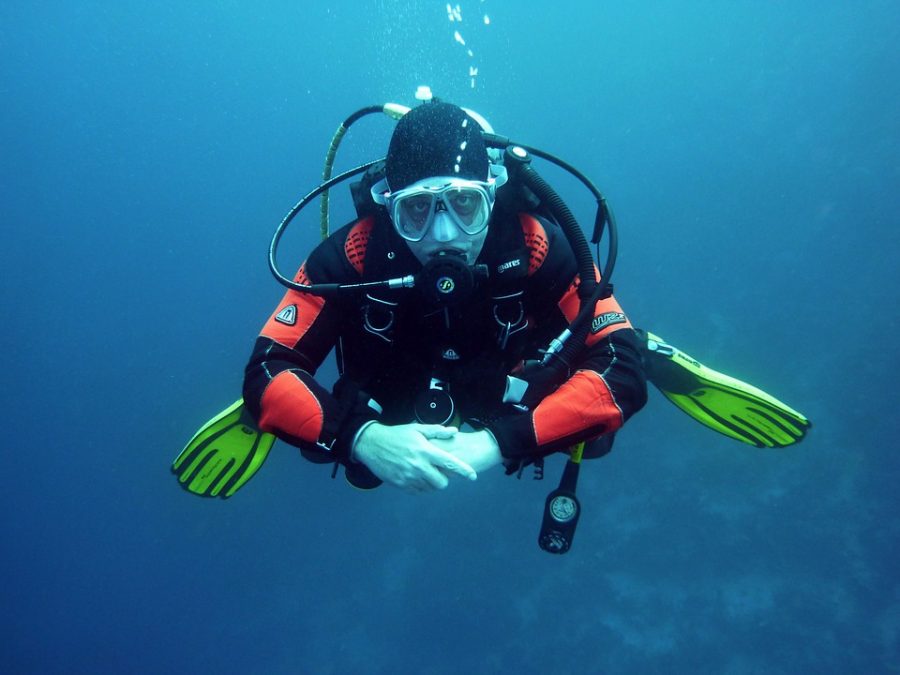Uncovering the Deep
Polish scuba diver Krzysztof Starnawski led an expedition and uncovered the world’s deepest cave. The expedition took place on September 27, 2016 in the Czech Republic. This cave, named Hranická Propast, was measured at 404 meters deep (1,325 ft.).
The cave, Pozzo del Merro, in Italy, was the previous record holder and was measured at 392 meters deep (1,286 ft).
The first time Krzysztof Starnawski dove the cave was in 1999. His crew believed that the cave extended much deeper due to the type of water they found while scuba diving. Starnawski began a series of dives in 2014, when he first reached a depth of 200 meters (600 ft.). He thought this was the bottom until he found a small passage called a “squeeze passage”. This passage led into another “vertical tunnel” that was pitch black. Starnawski lowered a probe into it and ran out of line before he hit the bottom at 383 meters (1,260 ft.). This depth was only 6ft. shorter then the previous record holder’s depth.
In 2015, the polish diver returned to the cave and found that the “squeeze passage” eroded and became wide enough for him to swim through. He dove into it, stopped at 265 meters (869 ft.), and sent another probe down. This probe hit the bottom at 370 meters (1,214 ft.). Starnawski believes that the probe landed on a pile of debris, which was from the opening when it eroded.
On September 27, 2016 the divers stayed on the surface while they sent a ROV into the cave.
Krzysztof Starnawski says that the most important part of the job was done by the robot. He states, “I scuba dived down to 200 meters just before the ROV’s deployment to put in the new line for the robot to follow. The goal was to give the ROV a good start from there to the deepest part of the cave. I came back to the surface, and then we went down with the robot to a depth of 60 meters (197 feet). From there, the team at the surface navigated it, via fiber-optic cable, down along my new line to 200 meters deep. Then it went down to explore the uncharted territory—to the record-breaking depth of 404 meters.”
Starnawski used a robot instead of diving himself because, “My intention was not to achieve the deepest dive by a human, but to assist the exploration by the ROV. In this cave we wanted to explore beyond the 400-meter limit. It can’t be done, so far, by a scuba diver in the cave. So I invited Bartlomiej Grynda from GRALmarine, with his custom-built ROV, to send the robot as deep as possible to explore the cave. The results were astonishing.”
When scuba divers dive to extreme depths, they have to decompress before they emerge. Starnawski says, “In the dry decompression bell that is underwater, I spend between two and four hours. And it’s 40 percent of the entire dive time. Usually I read. I laminate book pages to prevent paper from being destroyed by water. Crime stories and political thrillers are good reads!”
Visit http://www.nationalgeographic.com/adventure/activities/caving-and-canyoneering/deepest-underwater-cave-discovered/ for more information.

Hi, I'm Reagan, and I'm a sophomore this year and the Head Photography Editor. I play lacrosse and swim here at Air Academy. When I'm not playing lacrosse...









Ryn Wayman • Jan 17, 2017 at 12:07 pm
It’s cool to se how much there still is to discover
Maria Mettler • Jan 17, 2017 at 12:05 pm
Very well-written article. I like the story and learning about new discoveries.
Amber Musselman • Jan 17, 2017 at 11:57 am
I love reading about peoples adventures! love this article
Morgan Gatlin • Jan 17, 2017 at 11:48 am
Great article! Really cool to read about this new discovery!